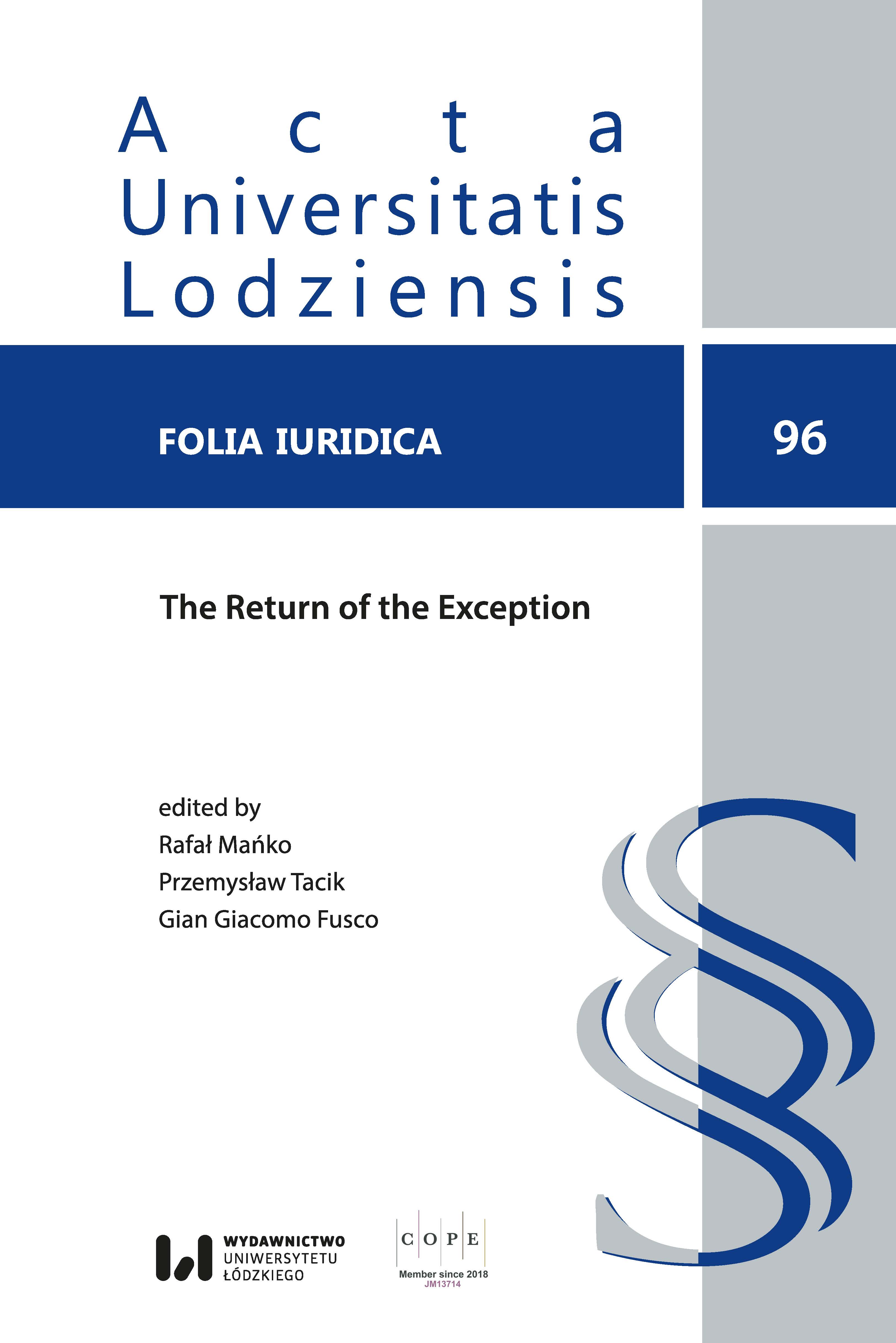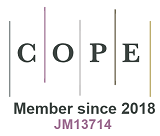The Necessity of Legal Typologies in Crisis and Emergency
DOI:
https://doi.org/10.18778/0208-6069.96.06Keywords:
exception, emergency, crisis, legal concepts, typologyAbstract
Legal analysis necessarily uses concepts, distinctions and typologies. These tools suffer challenges when the object of analysis or application is a crisis or emergency. The article looks into two examples of legal typologies of emergencies in the works of Gross and Ní Aiolaín and Agamben respectively. Based on this four levels of analysis for legal responses to emergencies is proposed: 1) explicit descriptions of actions by actors themselves, 2) positivist legal categories available in the context, 3) meta/comparative categories, and 4) philosophical/ontological concepts and categories that question or inquire into all the previous categories. The article concludes by discussing how these levels of analysis overlaps, merge and needs to be combined in order to grasp the complex phenomena of law in crisis.
Downloads
References
Agamben, Giorgio. 2004. “No to bio-political tattooing.” Le Monde, January 10, 2004.
Google Scholar
Agamben, Giorgio. 2005. State of exception. Chicago: University of Chicago Press. https://doi.org/10.2307/j.ctv1134d6w.16
Google Scholar
DOI: https://doi.org/10.2307/j.ctv1134d6w.16
Dyzenhaus, David. 1997. Legality and legitimacy: Carl Schmitt, Hans Kelsen, and Hermann Heller in Weimar. Oxford: Clarendon Press.
Google Scholar
Dyzenhaus, David. 2006. The constitution of law: Legality in a time of emergency. Cambridge: Cambridge University Press. https://doi.org/10.1017/CBO9780511618246
Google Scholar
DOI: https://doi.org/10.1017/CBO9780511618246
Ferejohn, John. Pasquale Pasquino. 2004. “The law of the exception: A typology of emergency powers.” International Journal of Constitutional Law 2(2): 210–239. https://doi.org/10.1093/icon/2.2.210
Google Scholar
DOI: https://doi.org/10.1093/icon/2.2.210
Gross, Oren. 1999. “The Normless and Exceptionless Exception: Carl Schmitt’s Theory of Emergency Powers and the Norm-Exception Dichotomy.” Cardozo Law Review 21: 1825–1868.
Google Scholar
Gross, Oren. Fionnuala Ní Aoláin. 2006. Law in times of crisis: emergency powers in theory and practice. Cambridge: Cambridge University Press. https://doi.org/10.1017/CBO9780511493997
Google Scholar
DOI: https://doi.org/10.1017/CBO9780511493997
Latour, Bruno. 2010. The making of law: an ethnography of the Conseil d’Etat. Cambridge: Polity.
Google Scholar
Lazar, Nomi Claire. 2009. States of Emergency in Liberal Democracies. Cambridge: Cambridge University Press. https://doi.org/10.1017/CBO9780511596704
Google Scholar
DOI: https://doi.org/10.1017/CBO9780511596704
Loevy, Karin. 2016. Emergencies in public law: the legal politics of containment. New York: Cambridge University Press. https://doi.org/10.1017/CBO9781316403556
Google Scholar
DOI: https://doi.org/10.1017/CBO9781316403556
Pirie, Fernanda. 2013. The anthropology of law. Oxford: Oxford University Press.
Google Scholar
DOI: https://doi.org/10.1093/acprof:oso/9780199696840.001.0001
Rossiter, Clinton. 1948. Constitutional dictatorship. Princeton: Princeton University Press.
Google Scholar
Schmitt, Carl. 2004. Legality and legitimacy. Duke University Press. https://doi.org/10.1215/9780822385769
Google Scholar
DOI: https://doi.org/10.1215/9780822385769
Tingsten, Herbert. 1930. Regeringsmaktens expansion under och efter världskriget: studier över konstitutionell fullmaktslagstiftning. Lund: Gleerup.
Google Scholar
Tingsten, Herbert. 1934. Les pleins pouvoirs: l’expansion des pouvoirs gouvernementaux pendant et après la grande guerre. Paris: Librairie Stock.
Google Scholar
Venice Commission. 1995. Emergency Powers – Science and technique of democracy No. 12. Strasbourg: Council of Europe. https://www.venice.coe.int/webforms/documents/?pdf=CDL-STD(1995)012-e
Google Scholar
Downloads
Published
How to Cite
Issue
Section
License

This work is licensed under a Creative Commons Attribution-NonCommercial-NoDerivatives 4.0 International License.













